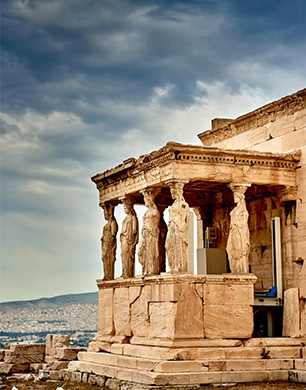
Photo Credit:
Josiah Lewis via www.pexels.com
For many history lovers, a visit to the museum is simply not enough – they need more. And what’s a better way to get that than by visiting ruins from thousands of years ago, that once upon a time were the centre of social and business lives of communities and empires.
Thankfully, for every history lover, there are plenty of places like this in the world, some in better shape than others. Below, you will find a list of them – whether you’re most passionate about ancient history, Middle Ages, Renaissance, or other historical eras, you’re bound to find something that suits your tastes.
So, if you’re a history buff, pack up your motorhome – for used campers and RVs, check out omcmotorhomes.co.uk – put on a good pair of walking shoes, grab your camera, and explore some of the best places every history lover should visit.
1 – The Parthenon, Athens
The Greek capital is home to one of the greatest architectural works from the ancient world – the Parthenon. It was built as a temple to Athena and was dedicated to her in 438 BC. When it was finished, the Parthenon stood over 45 meters tall and was the tallest building in Athens at the time.
It was destroyed by the Venetians in 1687 and reconstructed by Lord Elgin in 1802, who took most of its marble to decorate his mansion in Scotland (the Elgin Marbles). After many years, the Greeks finally got the chance to restore their national treasure in the 1980s, after which it became one of the best-known tourist attractions in Greece.
2 – The Colosseum, Rome
The Roman Colosseum is probably the best-known historical site in the city of Rome itself. This is the place where thousands upon thousands of people came to watch gladiators fight each other, wild animals and even prisoners of war.
The construction of this arena started around 70 AD, and it wasn’t completed until 80 AD. The opening ceremony saw around 100 species of wild animals from all around the world fight each other, as well as some executions of criminals – which were held on a regular basis until 523 AD. Since then, it has been used for a variety of purposes, such as housing, markets, and even an occasional concert. It is now a UNESCO World Heritage Site.
3 – The Roman Forum, Rome
The Roman Forum is another UNESCO World Heritage Site that is located right next to the Colosseum. It is a rectangular plaza surrounded by ruins from ancient Rome that were once buildings of religious or political importance and are among the most famous sights in Rome itself.
There are two large areas within this forum – Palatine Hill and Capitoline Hill. The former is home to what’s left of Rome’s earliest settlement – Palazzo Senatorio. Meanwhile, on Capitoline Hill are ruins of some of Rome’s most sacred buildings – Temple of Jupiter and Temple of Concord. It was also here that Romulus founded Rome in 753 BC.
4 – The Colosseum, Amman
Jordan’s capital is home to another Colosseum – a miniature version of the one in Rome with stone walls and columns. It was built in the 1st century AD and was used as a venue for public executions as well as recreations of historical events. In the 4th century AD, it was turned into a church, making it both a historical site from Ancient Rome and a medieval Christian site. Nowadays, it is used for various kinds of cultural events – plays, concerts, etc.
5 – Giza Plateau, Egypt
Situated on the outskirts of Cairo, Egypt, the Giza Plateau was the site of the Fourth Dynasty Giza Necropolis, which lasted from 2613 BC to 2494 BC. The Pyramids of Giza are some of the largest structures ever built. Some of the more famous ones include, the Great Pyramid of Giza, the Pyramid of Khafre, and the Pyramid of Menkaure. They form a complex of pyramids which also feature the Great Sphinx of Giza.
6 -Machu Picchu, Peru
Located on a nearly 8,000-foot (2,500-metre) mountain ridge in southern Peru , Machu Picchu is a 15th-century inca citadel that was buried under lush jungle vegetation until its discovery in the late 19th century (or the early 20th century; as to who was the first to discover it and when, that fact is disputed among several explorers). The fact that it was hidden away from Spanish invaders for centuries is why it is often known as the Lost City of the Incas.
It is believed that the Incas built this citadel around 1450 and then abandoned it a century later at the beginning of the Spanish conquest of the Americas. Machu Picchu was built with polished dry-stone walls and housed three main structures – the Intihuatana, the Temple of the Sun, and the Room of the Three Windows.

